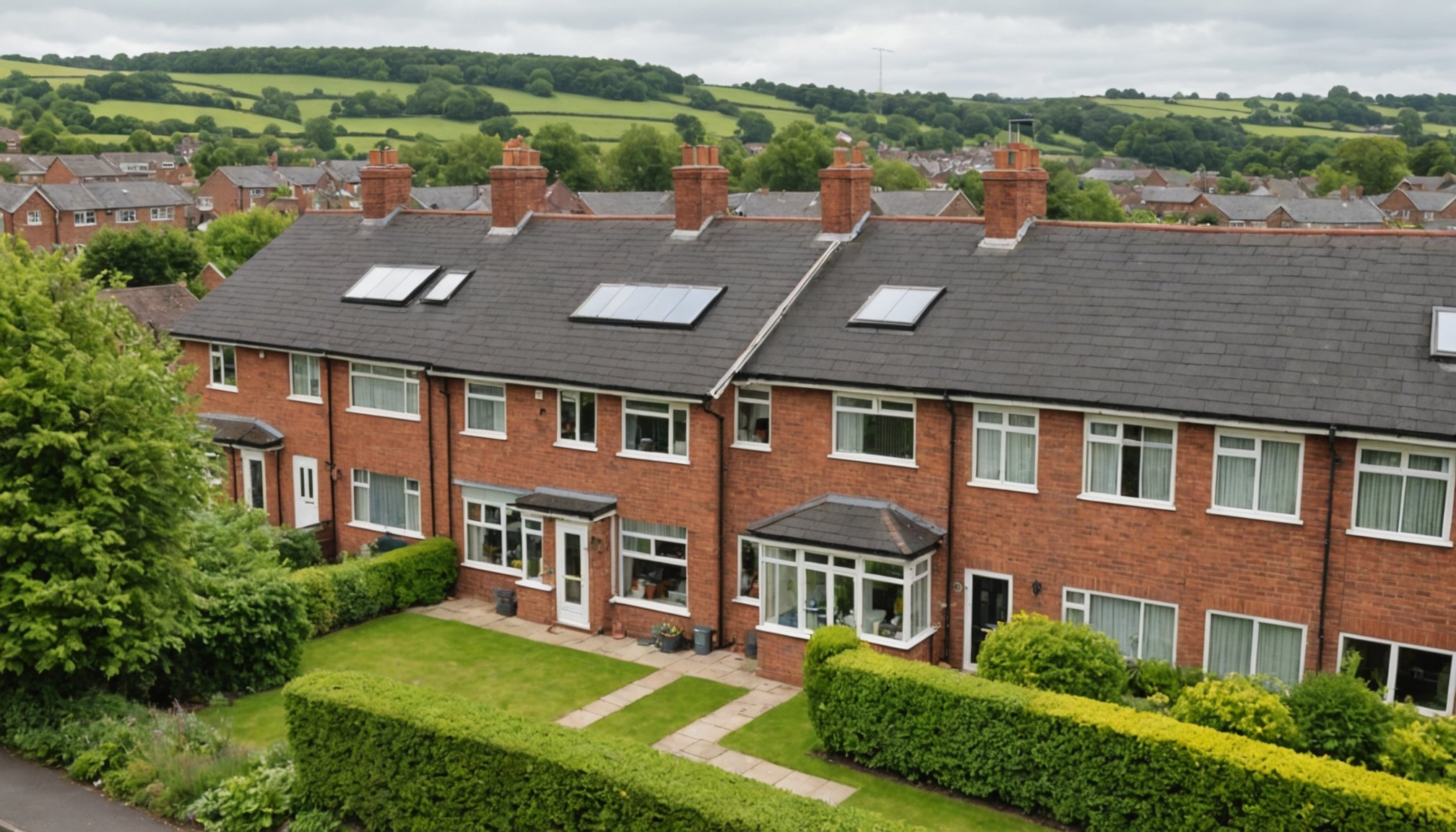Importance of CO2 Detectors in Terraced Homes
Terraced homes in the UK face unique dangers when it comes to carbon dioxide safety. The potential risks associated with carbon dioxide exposure can be profound. CO2 is an odourless, colourless gas, making it difficult to detect without specialised equipment. Exposure to high levels can lead to symptoms such as headaches, dizziness, breathlessness, and in extreme cases, can be fatal. The closed nature of terraced homes, often linked wall-to-wall with little ventilation, heightens the risk of CO2 accumulation.
CO2 detectors play a crucial role in preventing these hazards. These devices monitor CO2 levels in the air, alerting homeowners to dangerous concentrations. This ensures safety by providing early warnings before levels reach a harmful point, allowing residents to take necessary actions swiftly.
Have you seen this : Choosing the Ideal Portable Air Conditioner for Your UK Summer Home Office: A Guide for Temporary Spaces
In the UK, regulations underscore the importance of installing CO2 detectors, particularly in homes using gas appliances or solid fuel burning devices. Compliance with these mandates not only promotes safety but also aligns with national standards aimed at reducing CO2-related incidents.
To summarise, CO2 detectors are indispensable in preventing potential health risks in terraced homes, providing a simple yet powerful barrier against the dangers of carbon dioxide exposure. Prioritising their use can greatly enhance home safety and well-being.
Additional reading : Maximizing Efficiency: A Homeowner’s Guide to Integrating Solar Thermal Panels with Current Hot Water Systems in the UK
Strategic Placement of CO2 Detectors
Positioning CO2 detectors in your home isn’t just about convenience; it’s about ensuring maximum safety and compliance with safety standards. Proper placement can significantly increase their effectiveness in detecting carbon dioxide levels.
Common Areas for Installation
When installing CO2 detectors, focus on high traffic areas like hallways and living rooms. These areas are often where people spend most of their time, making them optimal for early detection. Additionally, placing detectors near gas appliances ensures immediate alerting if dangerous CO2 levels arise from leaks. Always include detectors near sleeping areas to provide safety during vulnerable hours.
Considerations for Multi-Story Terraced Homes
For multi-story terraced homes, strategic positioning on each floor is vital. Install detectors on each level to ensure all areas are covered. Avoid placing detectors behind obstructions like furniture, which can impair their ability to sense CO2 changes. Achieving a balance between aesthetics and safety ensures the detectors are not only effective but also unobtrusive in your home’s design.
Height and Environmental Factors
Experts recommend installing CO2 detectors at height appropriate for wall-mounted use, typically around eye level. Consider the impact of ventilation and airflow; placing detectors in areas with good air circulation enhances their performance. It’s advisable to avoid areas with high humidity, such as bathrooms, as this can affect the detector’s accuracy.
Relevant Regulations and Standards
Navigating the CO2 detector regulations in the UK can be daunting, but understanding them is crucial for safety and compliance. UK safety standards mandate that CO2 detectors be installed in homes to prevent accidental poisoning from carbon monoxide. These devices can detect hazardous CO2 levels, providing timely alerts and helping prevent health risks.
Key Standards for Homeowners
UK safety standards require CO2 detectors to conform to BS EN 50291-1. These standards ensure that detectors offer accurate readings and timely alerts, protecting families against CO2 leaks. Ensuring that your CO2 detector meets these standards is not just about compliance; it’s about ensuring your home is as safe as possible.
Consequences of Non-Compliance
The consequences of not adhering to CO2 detector regulations can be severe. Non-compliance could lead to fines, invalidation of insurance policies, and increased risk of CO2 poisoning. Landlords, in particular, should ensure that rental properties comply with these standards to avoid legal repercussions and ensure tenant safety. Avoiding these risks by ensuring your detector is compliant is a critical step in maintaining a safe home or property.
Safety Tips for CO2 Detector Use
Ensuring proper use and maintenance of CO2 detectors is crucial for user safety. These devices require frequent attention to remain effective and trustworthy.
Regular Maintenance and Testing
Routine checks are a cornerstone of effective CO2 detector maintenance. Batteries should be replaced at least every six months, similar to detectors indicating when they need replacement—often shown by a persistent beep or a flashing light. It’s advised to test CO2 detectors monthly to confirm they are operational and sensitive to detecting carbon monoxide levels.
Understanding Alarm Signals
It can be challenging to distinguish a CO2 alarm from other household alarms. CO2 alarms typically emit a distinctive loud, continuous beep. When an alarm sounds, immediate evacuation and ventilation of the area are essential. A common misconception is that CO2 detectors also pick up natural gas or smoke; they do not. They are specifically designed to detect carbon monoxide, emphasizing the need for various detector types in a home.
Additional Safety Measures
Beyond detectors, adequate ventilation is vital in homes to reduce CO2 buildup. Opening windows or using exhaust fans can help achieve this. Educating household members about CO2 risks and having an emergency plan ensures readiness for any carbon monoxide incident, strengthening overall home safety protocols.
Visual Aids and Checklists
Incorporating visual aids during the installation process of CO2 detectors can significantly enhance understanding and efficiency. Visual diagrams provide clear, step-by-step guidance, ensuring that every element is correctly placed and securely installed. These aids mitigate confusion, especially for those who may not be familiar with the technical aspects. By having a visual reference, installers can avoid common mistakes and ensure the device functions correctly.
An installation checklist is another crucial tool. It acts as a comprehensive guide, detailing every step and component necessary for successful CO2 detector installation. Important elements to include are:
- Verifying that the installation area is free from obstructions.
- Ensuring that power sources comply with the manufacturer’s specifications.
- Confirming the operation of the detector post-installation.
Furthermore, effective diagrams highlight key points like optimal placement locations, considering factors such as air circulation and distance from potential CO2 emission sources. For example, diagrams might illustrate the recommended height on a wall where the CO2 detector should be installed to guarantee accurate readings.
By combining these visual aids with a thorough installation checklist, users can increase the likelihood of a successful setup, enhancing safety and functionality. These tools are indispensable, serving both as educational resources and practical guides.
Frequently Asked Questions
Understanding the importance of CO2 detectors in a household can bring peace of mind. Below, we address some common concerns related to their use and placement.
How many detectors are needed?
The number of CO2 detectors required depends on several factors, including the size and layout of your home. As a rule of thumb, it is recommended to place at least one detector on every level of your home, including the basement and attic if applicable. Larger homes may need multiple detectors to cover all main living areas and sleeping spaces effectively. Also, consider factors such as ventilation and potential CO2 sources when determining placement.
What to do if a detector goes off?
If a detector sounds an alarm, take immediate action to ensure safety. First, evacuate the area and freshen the space with outdoor air. Avoid using any electrically powered devices as sparks could ignite CO2 gases. Call emergency services immediately to report the incident and seek professional help. It is crucial to stay out of the home until they have declared it safe for re-entry.
Differences between CO2 and carbon monoxide detectors
It’s vital to recognize the differences between CO2 and carbon monoxide detectors. CO2 (carbon dioxide), a natural gas, is harmless at normal levels but can be dangerous in high concentrations, especially in poorly ventilated areas. Carbon monoxide, on the other hand, is an odorless gas that can be deadly even at low levels. Having both types of detectors ensures comprehensive protection against these risks.











